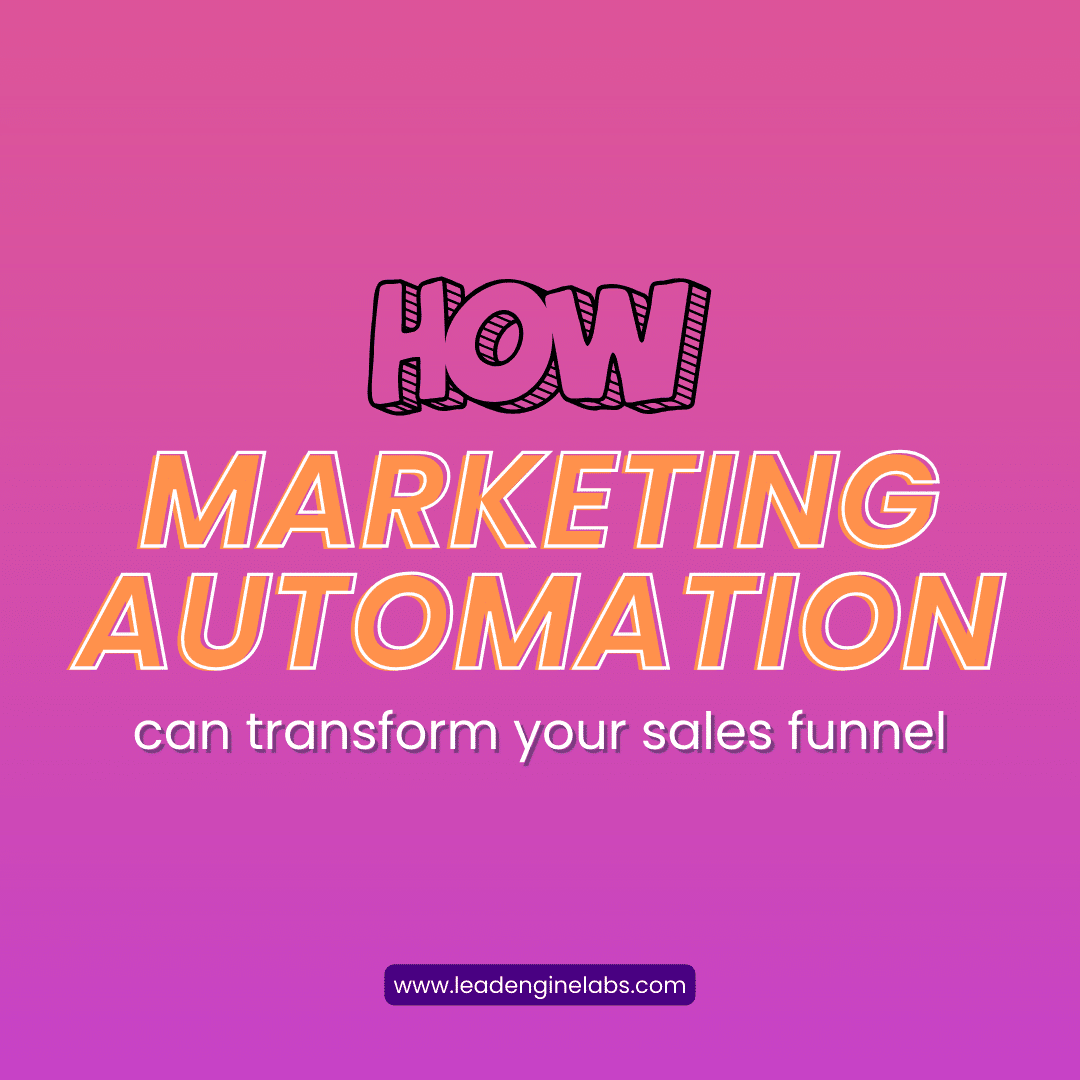Businesses are constantly seeking ways to streamline their processes and maximize efficiency. Enter marketing automation – a game-changing approach that’s revolutionizing how companies engage with prospects and nurture leads through the sales funnel. This article explores the transformative power of marketing automation and how it can supercharge your sales and marketing efforts.
The Rise of Marketing Automation
The digital age has brought about a seismic shift in how businesses interact with potential customers. As consumer behavior becomes increasingly complex and multi-channeled, traditional marketing methods are struggling to keep pace. This is where marketing automation steps in, offering a solution that’s both scalable and personalized.
Marketing automation has seen explosive growth in recent years.
According to Grand View Research, the global marketing automation market size was valued at USD 4.06 billion in 2019 and is expected to grow at a compound annual growth rate (CAGR) of 9.8% from 2020 to 2027. This surge is driven by businesses recognizing the need for more efficient, data-driven marketing strategies.
Understanding Marketing Automation: Definition and Benefits
What is Marketing Automation?
Marketing automation refers to the use of software and technology to automate repetitive marketing tasks and workflows. A marketing automation platform is a comprehensive solution that allows businesses to streamline, automate, and measure marketing tasks and workflows to increase operational efficiency and grow revenue faster.
Key Benefits of Marketing Automation
- Increased Efficiency: Automate repetitive tasks, freeing up your team to focus on strategy and creativity.
- Improved Lead Quality: Score and qualify leads based on behavior and engagement, ensuring sales teams focus on the most promising prospects.
- Enhanced Personalization: Deliver targeted content and messages based on user behavior, preferences, and stage in the buyer’s journey.
- Better ROI Tracking: Gain clear insights into which marketing efforts are driving results, allowing for data-driven decision making.
- Scalability: Easily scale your marketing efforts without a proportional increase in staff or resources.
- Consistent Omnichannel Experience: Provide a seamless experience across various touchpoints, from email to social media to your website.
By leveraging these benefits, businesses can create more effective marketing campaigns, nurture leads more efficiently, and ultimately drive more conversions.
Transforming the Sales Funnel: From Lead Capture to Nurturing
Marketing automation has the power to revolutionize every stage of your sales funnel. Let’s explore how:
Top of the Funnel: Lead Capture
Marketing automation platforms offer advanced lead capture capabilities:
- Dynamic Forms: Create smart forms that adapt based on user information, reducing friction in the sign-up process.
- Landing Page Optimization: A/B test different elements of your landing pages to maximize conversion rates.
- Social Media Integration: Automatically capture leads from social media campaigns and contests.
Middle of the Funnel: Lead Nurturing
This is where marketing automation truly shines:
- Drip Campaigns: Set up automated email sequences that nurture leads with relevant content based on their interests and behaviors.
- Lead Scoring: Assign points to leads based on their actions, allowing sales to focus on the most qualified prospects.
- Behavioral Triggers: Initiate specific actions (like sending an email or notifying sales) based on user behavior.
Bottom of the Funnel: Conversion
Marketing automation can help push leads towards conversion:
- Personalized Offers: Use a lead’s history and preferences to create tailored offers that are more likely to convert.
- Retargeting: Automatically trigger retargeting ads for leads who’ve shown interest but haven’t converted.
- Sales Alerts: Notify your sales team when a lead takes a high-intent action, allowing for timely follow-up.
Post-Purchase: Customer Retention and Upselling
The journey doesn’t end at conversion. Use automation to:
- Onboarding Sequences: Create automated welcome series to ensure new customers get the most out of your product or service.
- Loyalty Programs: Automatically track and reward customer loyalty.
- Cross-Sell and Upsell: Suggest complementary products based on purchase history and behavior.
By automating these processes, you create a seamless journey from prospect to loyal customer, maximizing lifetime value and fostering brand advocacy.
Key Features to Look For: What Makes a Good Marketing Automation Platform
When evaluating marketing automation platforms, consider these essential features:
- Email Marketing: Robust email capabilities including templates, A/B testing, and deliverability optimization.
- Lead Management: Tools for lead scoring, segmentation, and nurturing.
- CRM Integration: Seamless synchronization with your Customer Relationship Management system.
- Analytics and Reporting: Comprehensive dashboards and custom report builders to track KPIs.
- Multi-Channel Capabilities: Ability to orchestrate campaigns across email, social media, SMS, and web.
- Landing Page and Form Builders: Easy-to-use tools for creating and optimizing lead capture pages.
- Workflow Automation: Visual builders for creating complex, multi-step automation workflows.
- Personalization Engine: AI-powered tools for delivering personalized content and recommendations.
- Account-Based Marketing (ABM) Features: Capabilities for targeting and engaging high-value accounts.
- GDPR and Data Privacy Compliance: Tools to ensure your marketing efforts comply with data protection regulations.
Remember, the best marketing automation platform for your business will depend on your specific needs, budget, and existing tech stack.
Integration with CRM: Synchronizing Tools and Data
One of the most powerful aspects of marketing automation is its ability to integrate seamlessly with your Customer Relationship Management (CRM) system. This integration creates a closed-loop system where marketing and sales data flow freely, providing a 360-degree view of each lead and customer.
Benefits of Marketing Automation and CRM Integration
- Unified Customer View: Get a complete picture of each lead’s interactions with your brand across all touchpoints.
- Improved Lead Handoff: Automatically notify sales when a lead reaches a certain score or takes a specific action.
- Enhanced Reporting: Generate comprehensive reports that tie marketing efforts directly to revenue.
- Personalized Sales Outreach: Arm your sales team with detailed information about a lead’s interests and behaviors.
- Closed-Loop Analytics: Track the entire customer journey from first touch to closed deal and beyond.
Best Practices for Integration
- Clean Your Data: Ensure your data is clean and standardized before integration to avoid syncing issues.
- Define Your Processes: Clearly outline how leads will flow between marketing and sales.
- Train Your Teams: Ensure both marketing and sales understand how to use the integrated system effectively.
- Regular Audits: Periodically review your integration to ensure data is flowing correctly and processes are being followed.
By tightly integrating your marketing automation platform with your CRM, you create a powerhouse system that aligns your sales and marketing efforts, leading to more efficient operations and higher conversion rates.
How to Start with Marketing Automation
Implementing marketing automation can seem daunting, but with the right approach, it can revolutionize your sales and marketing efforts. Here’s how to get started:
- Audit Your Current Process: Analyze your existing sales funnel and identify areas where automation could have the biggest impact.
- Set Clear Goals: Define what you want to achieve with marketing automation. Is it more leads? Higher conversion rates? Better customer retention?
- Choose the Right Platform: Based on your goals and requirements, select a marketing automation platform that fits your needs and integrates with your existing tools.
- Start Small: Begin with one or two simple automation workflows. This could be a welcome series for new subscribers or a lead nurturing campaign for a specific product.
- Create Quality Content: Automation is only as good as the content it delivers. Invest in creating valuable, targeted content for each stage of the buyer’s journey.
- Train Your Team: Ensure your marketing and sales teams are well-versed in using the new system and understand its benefits.
- Monitor and Optimize: Regularly review the performance of your automation workflows and make data-driven improvements.
Remember, marketing automation is not a “set it and forget it” solution. It requires ongoing attention and optimization to truly transform your sales funnel. However, with patience and persistence, marketing automation can dramatically improve your marketing efficiency, lead quality, and ultimately, your bottom line.
By embracing marketing automation, you’re not just adopting a new tool – you’re evolving your entire approach to sales and marketing. In today’s digital-first world, this evolution is not just beneficial – it’s essential for staying competitive and driving sustainable growth.





